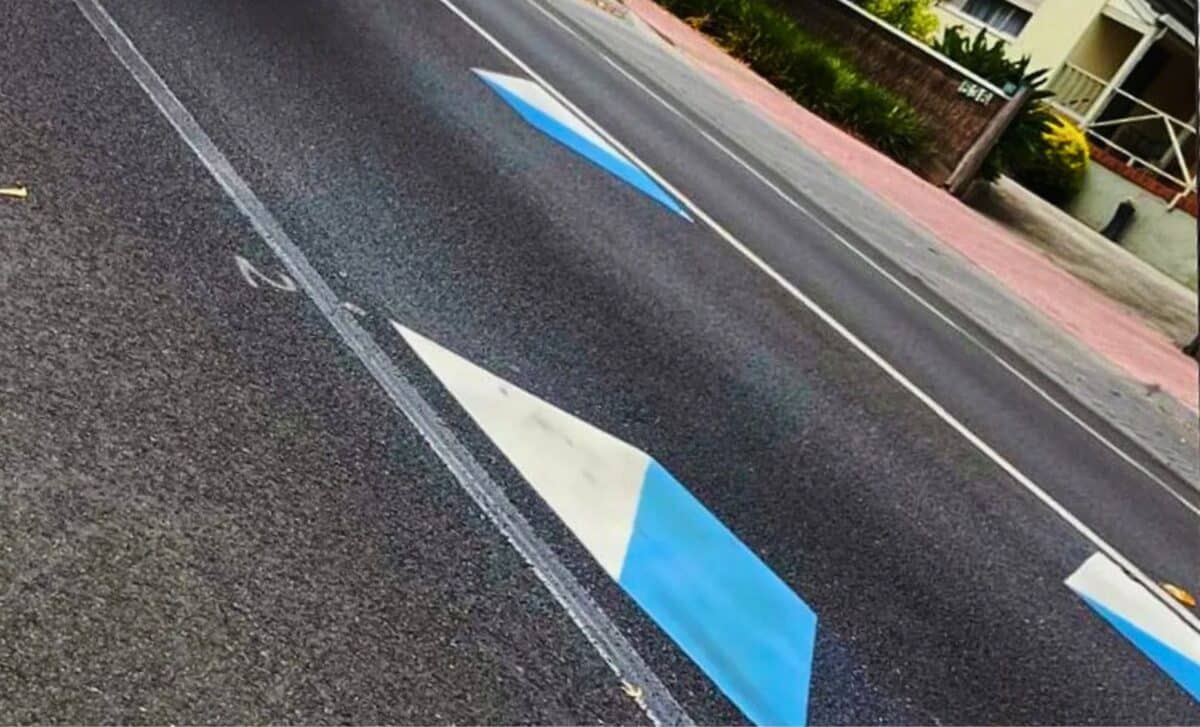Australian road authorities are testing new three-dimensional road markings designed to improve driver awareness and reduce road fatalities. Known as dragon’s teeth, these markings aim to alert motorists to changes ahead without relying on fines or demerit points.
The trial, led by researchers at the University of Adelaide, is part of a broader effort to meet the ambitious goal of achieving zero road deaths and serious injuries by 2050. If successful, the markings could be implemented across the country as a low-cost and effective road safety measure.
Innovative Approach to Road Safety
The dragon’s teeth markings are made from durable thermoplastic and designed to provide additional grip for cyclists and motorcyclists. The concept is inspired by a similar initiative in Singapore, where such markings have been used to encourage compliance with speed limits.
According to Mario Mongiardini, a leading road safety scientist at the University of Adelaide, the markings serve as a visual cue to increase driver attention.
“They are meant to create a sense of warning,” Mongiardini explained. “If successful, they could be implemented cheaply and quickly by authorities.”
Similar markings, though without the 3D visual effect, are already in use in school zones in New South Wales, where they indicate an elevated risk and the need for lower speeds.
Addressing Driver Behavior Through Design
The trial comes as authorities seek alternatives to the heavy enforcement measures currently in place. Some motorists have expressed frustration with the increasing number of speed and seatbelt detection cameras, prompting officials to explore behavioral-based interventions instead of punitive approaches.
Dr. Chris Stokes, another researcher at the University of Adelaide, emphasized that clear and effective signage is critical as speed limits continue to be reduced in pedestrian-heavy areas.
“Ten to fifteen years ago, you didn’t see many reduced speed zones in main road pedestrian areas,” Stokes said. “Now, as these areas increase, some drivers may not be fully aware of the changes.”
The dragon’s teeth markings aim to bridge this awareness gap by reinforcing the transition between different road environments.
Speed Remains a Key Factor in Road Fatalities
Despite ongoing road safety initiatives, around 1,200 Australians die in traffic accidents each year, with an estimated 40,000 people seriously injured.
Researchers stress that speed remains a critical factor in the vast majority of collisions.
“Speed is the key factor in 99 percent of crashes,” Stokes said. “The faster you hit an object, the harder the impact will be.”
Authorities hope the dragon’s teeth markings will contribute to slower speeds and increased driver awareness in high-risk areas.
Future of the Trial
Data collection for the trial will begin next week, with plans to install the markings at two additional sites in Adelaide. If results show a measurable reduction in vehicle speeds, the markings could become a widespread safety feature in select areas across the country.
However, researchers caution that they must be used strategically to maintain effectiveness.
“You can’t expect to have them around every corner,” Mongiardini said. “If they are overused, drivers will quickly lose trust in the system.”
Instead, the markings are intended to complement existing road safety measures, such as reduced speed limits and changes in road texture.









